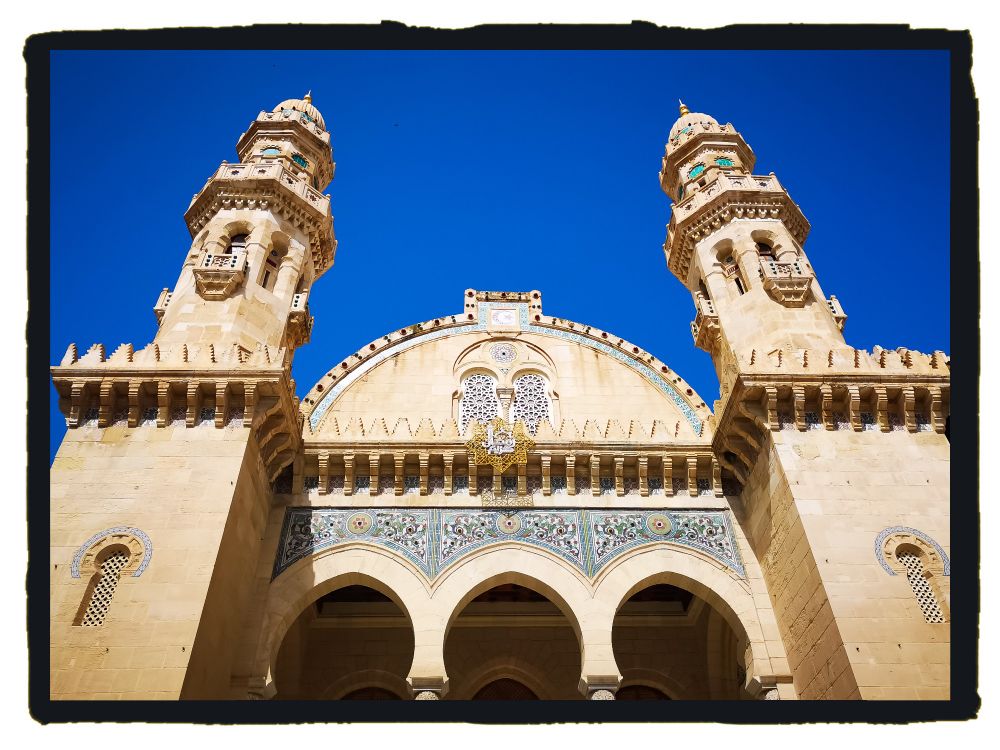






Si ce n’est pas l’arabe classique, sensibilisez-vous au dialecte vernaculaire de votre terrain. Vous comprendrez un peu mieux de quoi vous parlez. 1/

Si ce n’est pas l’arabe classique, sensibilisez-vous au dialecte vernaculaire de votre terrain. Vous comprendrez un peu mieux de quoi vous parlez. 1/
📸 Été 2025.
Publicité vue sur un mur en Normandie datant probablement des années 1924 à 1951.
Les plaques et papiers de la marque "As de trèfle" est une des marques les plus connue de plaques photographiques en France durant la première moitié du XXe siècle.

📸 Été 2025.
Publicité vue sur un mur en Normandie datant probablement des années 1924 à 1951.
Les plaques et papiers de la marque "As de trèfle" est une des marques les plus connue de plaques photographiques en France durant la première moitié du XXe siècle.

In the center, a dhow from Bandar Abbas - Hormozgan region (Iran) arrives and prepares to dock.
Fieldwork archives 2003.

In the center, a dhow from Bandar Abbas - Hormozgan region (Iran) arrives and prepares to dock.
Fieldwork archives 2003.
Ph. A floral Eid card. Published by Hafiz Qamruddin & Sons, Lahore and posted from Lahore in 1935. Priya Paul Collection, New Delhi.

Ph. A floral Eid card. Published by Hafiz Qamruddin & Sons, Lahore and posted from Lahore in 1935. Priya Paul Collection, New Delhi.
This fieldwork reminded me that we should not take at face value the writings of those who do not do field research.
A word to the wise!

This fieldwork reminded me that we should not take at face value the writings of those who do not do field research.
A word to the wise!

Mare nostrum non aeternum est.

Mare nostrum non aeternum est.
The Baroud genre appears to be one of the dynamic manifestations of musical hybridization in North Africa. Here are some photos from my current fieldwork. "The common heritage belongs to no one," more here than elsewhere, follow my gaze, some might say...



The Baroud genre appears to be one of the dynamic manifestations of musical hybridization in North Africa. Here are some photos from my current fieldwork. "The common heritage belongs to no one," more here than elsewhere, follow my gaze, some might say...
Make your own opinion...
Make your own opinion...
Une histoire du 9e art et de la culture urbaine en Algérie. Les connaisseurs reconnaîtront la référence...

Une histoire du 9e art et de la culture urbaine en Algérie. Les connaisseurs reconnaîtront la référence...
Depending on the texts and the part of the region concerned by my research topic, I use different terms. They do not challenge the historical and geographical consensus:
- Persian Gulf.
- Arabian Gulf.
_ Arab-Persian Gulf.
It's all a matter of perspective...

Depending on the texts and the part of the region concerned by my research topic, I use different terms. They do not challenge the historical and geographical consensus:
- Persian Gulf.
- Arabian Gulf.
_ Arab-Persian Gulf.
It's all a matter of perspective...




Graffiti is widespread in our modern urban spaces. This one, seen recently in Algiers, was done with a stencil. I don't know when, by whom, or on what occasion. It leaves us free to reinterpret it.
Translation :
"We walk proudly everywhere."

Graffiti is widespread in our modern urban spaces. This one, seen recently in Algiers, was done with a stencil. I don't know when, by whom, or on what occasion. It leaves us free to reinterpret it.
Translation :
"We walk proudly everywhere."
Always be surprised!


Always be surprised!
My stay is very informative!

My stay is very informative!
In 1962, it became a mosque again. In 1992, it was listed, along with the entire Kasbah of Algiers, as a UNESCO World Heritage Site.


In 1962, it became a mosque again. In 1992, it was listed, along with the entire Kasbah of Algiers, as a UNESCO World Heritage Site.
Built in 1436, the Ketchaoua Mosque was extensively remodeled in the 18th c. under the rule of Dey Hassan. It was rebuilt again in the 19th c., after its requisition in 1832, to be used for Catholic worship during the colonial period under the name Saint-Philippe Cathedral.


Built in 1436, the Ketchaoua Mosque was extensively remodeled in the 18th c. under the rule of Dey Hassan. It was rebuilt again in the 19th c., after its requisition in 1832, to be used for Catholic worship during the colonial period under the name Saint-Philippe Cathedral.
The Bardo villa (Algiers) was built at the end of the 18th century by a wealthy Tunisian exile, Hadj Omar or Mustafa Ben Omar.
Today, the villa houses the Centre for Prehistoric, Anthropological & Historical Research whose research cover prehistory, anthropology and history.




The Bardo villa (Algiers) was built at the end of the 18th century by a wealthy Tunisian exile, Hadj Omar or Mustafa Ben Omar.
Today, the villa houses the Centre for Prehistoric, Anthropological & Historical Research whose research cover prehistory, anthropology and history.
Today and now. April 28, 2025.


Today and now. April 28, 2025.

